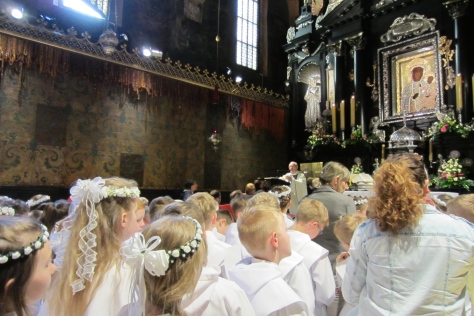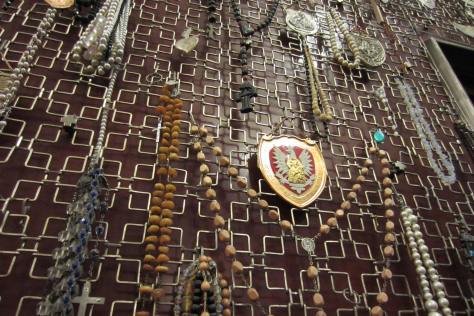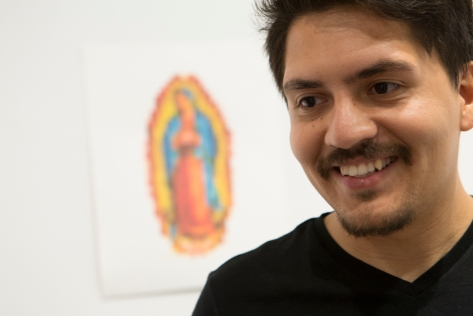“When the Pope John Paul II’s mother died, his father brought him to this spot, right in front of this painting and said, ‘Now, this is your mother.'”
Walking down the whitewashed halls of the 17th-century monastery an hour or so outside of Krakow, I could hear the familiar cadence of a mass, even though I couldn’t understand the words. I quietly entered the back of the baroque church with my guide, Lucas, who has been ferrying me across the Polish countryside, first to the home town of Saint Pope John II and now to the Polish pope’s favorite pilgrimage spot, Kalwaria Zebrzydowska.
Even though I knew Lucas would rather be outside having a cigarette, he could see how much I wanted to join the mass and led me—through the legendary corridors of the Friars Minor Observants hung with soot-darkened paintings of the Virgin and Baby Jesus and upteen saints I could not name— into a short, brightly lit passage stuffed with crucifixes meant for procession, decorated in silk flowers and ribbons, and piles of now-useless crutches given over by pilgrims who found the strength to walk after visiting this church.
As we turned the corner and the church opened up—scenes of heaven and angels in pink, blue and yellow on the ceiling and massive, ornate altar in black marble and gold—the mass was ending. Lucas reverently made the sign of the cross and led me along the side, by cool grey marble walls with alcoves filled with sculptures and chubby cherubs to a crowded side chapel.
“This is the Lady of Kalwaria,” he said pointing to a painting of the Virgin Mary with Jesus, both wearing royal crowns of red velvet and gold, clothed in blue garments alive with golden and bejeweled flowers. ”She is responsible for many miracles.”
There was not an inch of space in the chapel between the children dressed in white gowns and flowered crowns who had just received first communion, their families, tourists, and pilgrims. The faithful were on their knees in prayer on the black and white checkered floor or jostling to get closer to the painting, to get a message through, like fans at a rock concert trying to get closer to the stage. It was hot and close.
The object of affection was this painting from the 1600s that reportedly wept in 1641 and has long been one of the most visited pilgrimage sites in Poland. For Saint Pope John Paul II, it was right up the street from his home town of Wadowice, and he would frequently come to this chapel and the surrounding forest to walk the miles of trails linking to small chapels.
“When the Pope’s mother died, his father brought him to this spot, right in front of this painting and said, ‘Now, this is your mother,’ said Lucas.
It is said from that day forward, Pope John Paul dedicated himself to Mary with the words that he would pronounce for a lifetime, Totus Tuus, “I belong entirely to you”































